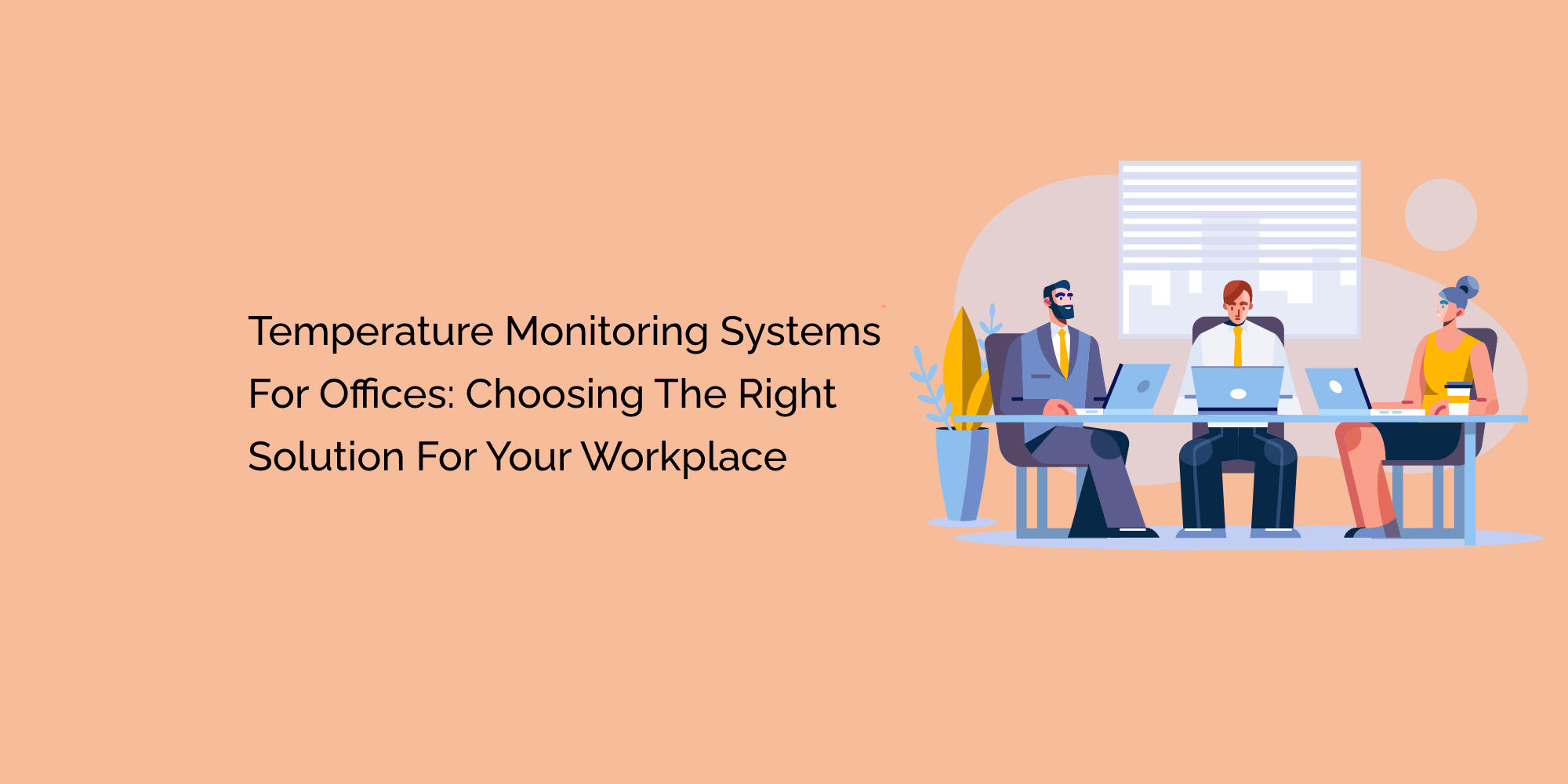Maintaining a comfortable and productive working environment is crucial in today's modern office spaces. Temperature significantly affects employee comfort, well-being, and overall productivity. To ensure optimal conditions, many offices are turning to temperature monitoring systems. These advanced solutions provide real-time data on office temperatures and offer intelligent insights and control options. This article will explore the importance of temperature monitoring systems in offices and guide you through choosing the right solution for your workplace.
The Significance of Temperature Monitoring in Offices
The temperature has a profound impact on employee well-being and performance. Extensive heat or cold can lead to discomfort, decreased focus, and reduced productivity. By implementing a temperature monitoring system, offices can precisely control the indoor climate. In addition, these systems offer accurate and real-time data, allowing facility managers to identify temperature fluctuations and make necessary adjustments promptly.
Understanding Different Types of Temperature Monitoring Systems
Various temperature monitoring systems are available, each offering unique features and benefits. This section will cover the most commonly used solutions, including:
- Wired Systems: These systems utilize sensors and wired connections to measure and transmit temperature data. They are reliable, cost-effective, and suitable for smaller office spaces.
- Wireless Systems: Wireless temperature monitoring systems offer easy installation and scalability flexibility. They use wireless sensors to gather temperature data, making them suitable for larger office environments.
- Internet of Things (IoT) Systems: IoT-based temperature monitoring systems leverage the power of connectivity to provide real-time data and advanced analytics. These systems enable automated control, remote access, and integration with other intelligent office devices.
- Cloud-based Systems: Cloud-based temperature monitoring systems store data in the cloud, allowing access from anywhere via web or mobile applications. They offer centralized control, historical data analysis, and customizable reporting.
Key Factors to Consider When Choosing a Temperature Monitoring System
- Accuracy and Reliability: Look for a system that offers high accuracy in temperature measurement and reliable performance over time.
- Scalability: Consider the system's scalability to accommodate your office's future growth and expansion.
- Connectivity Options: Determine whether the system supports wired, wireless, or IoT connectivity based on your office infrastructure and requirements.
- Integration Capabilities: Check if the system can integrate with other building management systems or smart office devices for enhanced control and automation.
- Real-time Monitoring and Alerts: Ensure the system provides real-time temperature monitoring and sends alerts or notifications in case of temperature deviations.
- Data Logging and Analytics: Look for systems that offer comprehensive data logging capabilities and advanced analytics for in-depth temperature analysis and trend identification.
- User-Friendly Interface: Consider the system's ease of use and intuitive interface, as it will impact user adoption and system management.
- Cost and Return on Investment: Evaluate the overall cost of the system, including installation, maintenance, and operational expenses, and assess the potential return on investment through improved energy efficiency and employee productivity.
Certainly! Here are a few "People Also Asked" questions related to temperature monitoring systems for offices, along with their corresponding answers:
Q: What are the benefits of implementing a temperature monitoring system in an office?
A: Implementing a temperature monitoring system offers several advantages. It allows you to maintain a comfortable working environment, improve employee productivity, enhance energy efficiency, identify HVAC issues early on, and ensure regulatory compliance with temperature-related standards.
Q: Can a temperature monitoring system help in reducing energy costs?
A: Yes, a temperature monitoring system can help reduce energy costs. By providing real-time data and insights into temperature fluctuations, you can make informed decisions about HVAC system usage, optimize temperature settings, and identify energy-saving opportunities, resulting in reduced energy consumption and lower utility bills.
Q: How often should temperature sensors be calibrated?
A: Temperature sensors should be calibrated regularly to ensure accurate readings. The calibration frequency depends on sensor type, manufacturer recommendations, and environmental conditions. It is advisable to follow the calibration schedule the sensor manufacturer provides or consult a professional for guidance.
Conclusion
Implementing a temperature monitoring system in your office is a proactive step towards creating a comfortable and productive working environment. You can choose the solution that aligns with your office's unique needs by considering factors such as accuracy, scalability, connectivity options, integration capabilities, real-time monitoring, data logging, user interface, and cost. With the right temperature monitoring system in place, you can optimize energy usage, enhance employee well-being, and improve overall productivity in your workplace.








